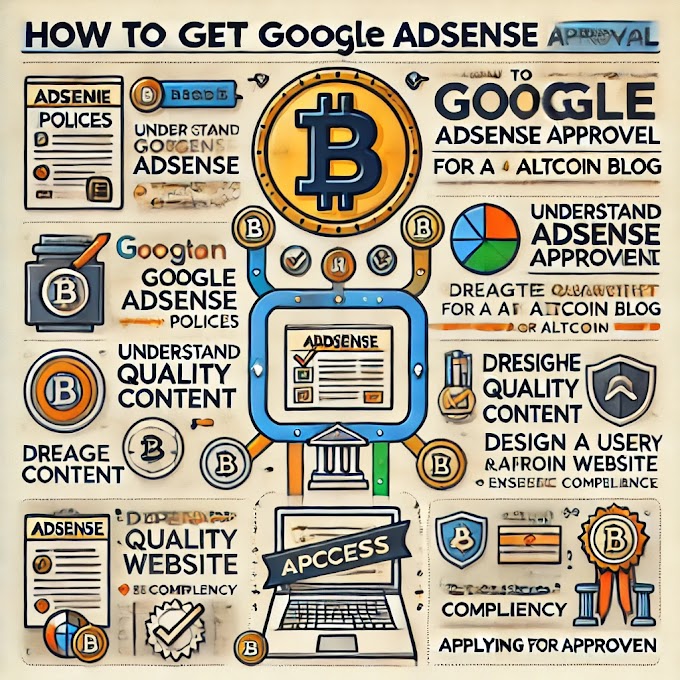Google AdSense: Active Dashboard Deep Dive
The Google AdSense dashboard is a vital tool
for publishers, providing insights into the performance and revenue generated
from ads on your site. It’s a central hub to track earnings, monitor ad
performance, optimize placements, and gain actionable insights to improve your
ad revenue.
This deep dive explores its key components,
functionalities, and strategies to maximize its potential.
1. Key Components of the AdSense
Dashboard
The AdSense dashboard is divided into several
sections that provide critical data:
1.1 Overview Tab
The Overview tab offers a snapshot of
your account performance, including:
- Estimated
Earnings: Displays revenue for the day, the
previous day, and the current month.
- Page
Views: Total views of pages where ads are
displayed.
- Impressions:
Number of times ads were shown.
- Click-Through
Rate (CTR): The percentage of ad views that
resulted in clicks.
- Cost
Per Click (CPC): Average earnings per ad click.
1.2 Performance Reports
The Performance Reports tab provides
detailed analytics, allowing publishers to:
- Filter
data by date ranges, ad units, and platforms.
- Track
individual ad units' performance to identify
underperforming areas.
- View
metrics like eCPM (effective cost per thousand impressions),
impressions, and clicks.
1.3 Ad Review Center
The Ad Review Center enables control
over the ads displayed on your site:
- Approve
or block specific ad categories.
- See
advertiser information and block unwanted ads.
This is particularly useful for maintaining brand consistency or adhering to regional content regulations.
1.4 Optimization Tab
Google offers personalized tips to enhance ad
revenue:
- Suggestions
for ad placement improvements.
- Recommendations
for trying new ad formats or increasing the number of ads.
1.5 Payments Section
Track earnings and payment history, manage
payment methods, and review transaction details.
2. How to Interpret Dashboard Data
Understanding metrics is crucial for effective
decision-making. Here's how to interpret key data points:
2.1 Revenue Metrics
- RPM
(Revenue Per Mille): Measures the estimated earnings
per 1,000 page views.
- Formula:
(Total Earnings ÷ Total Page Views) × 1,000
- Indicates
overall monetization efficiency.
- CPC:
Helps gauge the value of individual ad clicks.
2.2 Engagement Metrics
- CTR
(Click-Through Rate): Indicates how engaging your ads
are.
- A
low CTR might suggest poorly placed ads or irrelevant content.
- Impression
Share: Tracks the number of impressions
compared to your ad inventory availability.
2.3 Traffic Insights
- Use
the Traffic Source Reports to identify where your audience is
coming from (search, social media, or referral).
- Segment
traffic by device to optimize ads for mobile or desktop users.
3. Advanced Features and Tools
3.1 Experiments
The dashboard allows you to run A/B tests to
compare ad formats and placements:
- Test
responsive ads versus fixed-size ads.
- Experiment
with different ad colors or fonts for text-based ads.
3.2 Blocking Controls
- Block
specific advertiser URLs or entire categories such as gambling or
adult content.
- Use
geo-blocking to customize ads based on regional policies.
3.3 Page-Level Insights
The Insights feature highlights
top-performing pages and offers optimization suggestions:
- Use
this to focus on pages driving the most revenue.
4. Best Practices for Using AdSense
Dashboard
4.1 Optimize Ad Placement
- Use
heatmaps to identify high-visibility areas.
- Place
ads near content but avoid intrusive layouts that might violate Google’s
policies.
4.2 Diversify Ad Formats
- Experiment
with text ads, display ads, and rich media formats.
- Leverage
in-feed and in-article ads for better integration.
4.3 Monitor Ad Load Speed
- Use
Google PageSpeed Insights to ensure ads don’t slow down your site.
- Optimize
images and scripts for faster load times.
4.4 Regularly Review the Ad Review
Center
- Stay
updated on advertiser trends.
- Block
ads that don’t align with your niche or target audience.
5. Resources for Mastering AdSense
- Google
AdSense Help Center: Comprehensive documentation for
troubleshooting and optimization.
- AdSense
Best Practices Guide: Tips and case studies to
enhance revenue.
- Think with Google:
Industry insights and updates on ad trends.
- Google
Ads Policy Center: Stay compliant with Google's ad
guidelines.
6. FAQs: Maximizing AdSense Dashboard
Efficiency
1.
How do I increase my CTR in AdSense?
o
Optimize ad placements and formats to align
with user intent.
o
Use responsive ad units to adapt to
device-specific layouts.
2.
What’s the ideal RPM for a website?
o
RPM varies by niche. For example, finance
websites often have higher RPMs than lifestyle blogs.
3.
How often should I review the Ad Review
Center?
o
Weekly reviews are recommended to stay updated
on ad performance and block unwanted ads.
4.
Can I track individual ad unit performance?
o
Yes, use the Performance Reports tab to
analyze metrics for each ad unit.
5.
How do I identify underperforming pages?
o
Use the Insights feature to detect pages with
low RPM or high bounce rates.
6.
Does ad format impact revenue?
o
Absolutely. Rich media ads often have higher
CTR and CPC compared to static text ads.
7.
Why is my CPC lower than expected?
o
Low CPC can result from targeting low-value
keywords or displaying irrelevant ads.
8.
What are common AdSense policy violations?
o
Clicking on your own ads, placing ads on
inappropriate content, or using deceptive layouts.
9.
How do I improve ad load times?
o
Use lightweight ad formats and optimize site
speed with tools like PageSpeed Insights.
10.
Can I use AdSense with other ad networks?
o
Yes, but ensure compliance with Google’s ad
placement policies.
By mastering the Google AdSense dashboard, you
can unlock insights that drive revenue growth, enhance user experience, and
improve your overall site performance. For further learning, explore the AdSense YouTube Channel.







